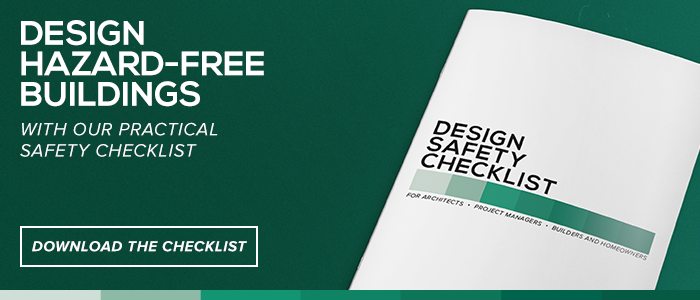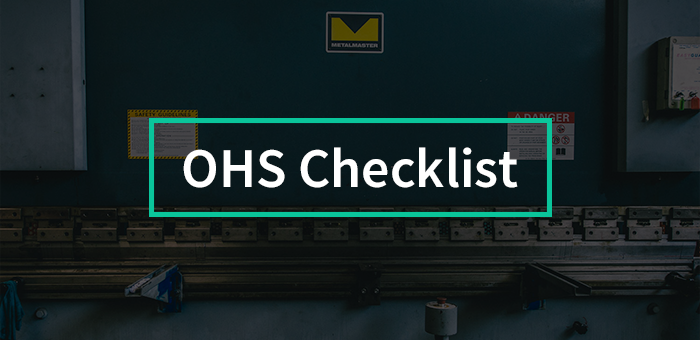Extensive health and safety regulations and codes of practice apply to the commercial construction industry — arguably more so than any other field of work in Australia. For building owners, designers and site supervisors/managers, this regulatory environment can be a minefield to navigate.
And while everyone involved in construction works — including your contractors other employees — have a responsibility in following health and safety guidelines, it is the duty of the business or undertaking to ensure that the work environment does not present risk.
Construction safety and the law
Since 2012, Australia’s Occupational Health & Safety (OHS) laws have been transitioning to new Work Health & Safety (WHS) laws. These have been implemented through a gradual rollout in each State and Territory. While WHS laws are already in place in New South Wales, Queensland, the Australian Capital Territory, the Northern Territory, Tasmania and South Australia, Victoria and Western Australia have not yet made a decision on whether to adopt the changes and in these states the OHS framework still applies.
Meanwhile, the Construction Work Code of Practice — developed by Safe Work Australia — has been developed as a generic guide for businesses and contractors to outline health and safety considerations while carrying out commercial construction work. It outlines specific concerns applicable to work involving:
- Prevention of falls
- Noise
- Hazardous manual tasks
- Confined spaces
- Demolition work
- Electrical safety and electrical work
- Plant and structures
- High risk work (licensing and registrations)
- Hazardous chemicals, asbestos and lead.
Employees have the right to stop work due to any of these aspects if they deem their environment unsafe, and should defer to other tasks until the safety risk is removed.
When things go wrong on the construction site
Granted, the construction industry faces more extreme workplace dangers than those associated with a typical 9-5 office job. While this explains why such high volumes of regulation is required to govern construction activity, unfortunately it cannot rule out accidents entirely.
According to Safe Work Australia, more than 70% of the construction workforce is covered by workers compensation. 2009 data indicated that the most common compensation claims emerging from building sites related to sprains/strains (30% of all injuries), and cuts/open wounds (26%). Compensation claims can be costly to the business undertaking construction, and if it is discovered that the business has been negligent in their responsibility to maintain a safe work environment, substantial fines may be administered. For example, last year a tragic wall collapse at a Melbourne building site led to the deaths of three pedestrians. Found to have breached workplace safety law, construction company Grocon were ordered to pay a $250,000 fine — and suffered a detrimental blow to their corporate reputation in the process.
Checklist: how to ensure a safe work environment for construction workers
It’s impossible to cover the sheer breadth of legislation, regulations and codes relevant to construction safety in one blog post, so for more detailed information, please consult the relevant Building Codes and Acts in your state. In the meantime, there are some simple considerations to keep in mind when managing construction contractors and employees, which will help to ensure you fulfill your duty of care and eliminate the risk of accident, injury or worse — legal action.
Have all employees received health and safety awareness training and a site-specific induction? Are emergency instructions and contact numbers easily accessible on site, should an accident occur?
- Do you have an Emergency Protocol and gathering point nominated?
- Do you have a nominated First Aid Representative on site?
- Are employees receiving the necessary supervision so that they can do their work safely?
- Are your employees working with proper protective gear? Safety glasses, hard hats, protective work boots and high visibility safety vests should be worn at all times on building sites.
- Have existing building structures been evaluated for asbestos?
- Have tools and equipment been recently tested for safety?
- Is appropriate signage in place to identify potential building site risks?
Has a Safe Work Method Statement (SWMS) been prepared? New WHS Regulations classify a number of activities as ‘high risk construction work’ for which), for which a SWMS must be prepared before construction work starts.
At Latham, we’ve spent more than 70 years working with the construction industry to provide the highest quality architectural safety products for stairs and flooring — so it’s our business to know all there is to know about meeting safety standards. Our company prides itself on supporting all aspects of public and workplace safety through the products we manufacture — including stair treads and nosings, entry mats and frames, and protective wall systems. If you’d like to speak with one of our experts to see how our products can improve the safety rating in your building, contact us here.
To learn more about legal requirements applicable to construction industry employers, and how to ensure you adhere to current work health and safety regulations, we recommend visiting the Office of the Federal Safety Commissioner.
To find out more about Latham products, please visit www.latham-australia.com. To talk to a Latham product expert, call 1300 LATHAM (528 426) or email sales@latham-australia.com.


